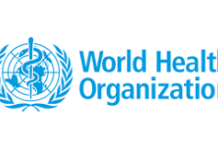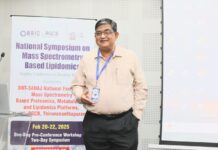Johnson & Johnson has submitted a Biologics License Application (BLA) to the U.S. Food and Drug Administration (FDA) seeking approval for nipocalimab, a treatment for generalized myasthenia gravis (gMG).
This marks the first global approval request for nipocalimab. The application is supported by data from the phase 3 Vivacity-MG3 study, which demonstrated that patients who received nipocalimab combined with standard care (SOC) showed superior outcomes compared to those who received a placebo plus SOC.
The primary focus of the study was the improvement in the MG-ADL score over 24 weeks. Participants in the study included adults who were positive for anti-AChR, anti-MuSK, and anti-LRP4 antibodies, covering about 95% of the gMG patient population. This makes Vivacity-MG3 the first study to show sustained disease control in these subtypes. The safety and tolerability of nipocalimab were consistent with previous studies.
Bill Martin, Ph.D., global therapeutic area head of neuroscience at Johnson & Johnson Innovative Medicine, expressed optimism about the potential of nipocalimab to provide sustained disease control for people living with gMG, a chronic condition. He emphasized that the BLA submission represents a significant advancement in Johnson & Johnson’s efforts to develop innovative treatments for autoantibody-driven diseases.
Nipocalimab is the first FcRn blocker to show sustained disease control in gMG, with improvements in the MG-ADL score when added to SOC, compared to placebo over a six-month period. Earlier this year, Johnson & Johnson presented data at the American Academy of Neurology Annual Meeting, highlighting the molecular properties of nipocalimab, including its high binding affinity and specificity to the IgG binding site of FcRn. These characteristics may differentiate nipocalimab within the FcRn blocker treatment class, particularly in its ability to reduce IgG autoantibodies in diseases such as gMG.
Myasthenia gravis (MG) is an autoimmune disease where autoantibodies target proteins at the neuromuscular junction, leading to muscle weakness. The disease affects approximately 700,000 people globally, with both men and women across all age groups, though it is most common in young women and older men.
About 50% of MG patients are women, and one in five of these women are of childbearing age. While initial symptoms are often ocular, the disease generalizes in the majority of cases, leading to more severe symptoms such as limb weakness, drooping eyelids, and difficulties with speech and breathing. There are an estimated 100,000 individuals in the U.S. living with gMG.
Despite existing therapies, there remains a need for new treatment options for those who do not respond well to current treatments. The Vivacity-MG3 study was designed to assess the sustained efficacy and safety of consistent dosing in this unpredictable chronic disease. The study involved 199 adult gMG patients who had an insufficient response to ongoing SOC therapy. Of these, 153 were antibody positive.
Participants were randomized to receive either nipocalimab plus SOC or a placebo plus SOC. The primary endpoint was the mean change in MG-ADL score from baseline over Weeks 22 to 24. The study also measured changes in the Quantitative Myasthenia Gravis (QMG) score, a clinician-assessed measure of disease severity. Long-term safety and efficacy are being further evaluated in an ongoing open-label extension phase.
Nipocalimab is an investigational monoclonal antibody designed to bind with high affinity to block FcRn and reduce circulating IgG antibodies, including autoantibodies and alloantibodies, without causing broad immunosuppression. As reported pharmabiz.com, this blockade is also believed to prevent the transplacental transfer of maternal alloantibodies to the fetus in maternal-fetal diseases.
























